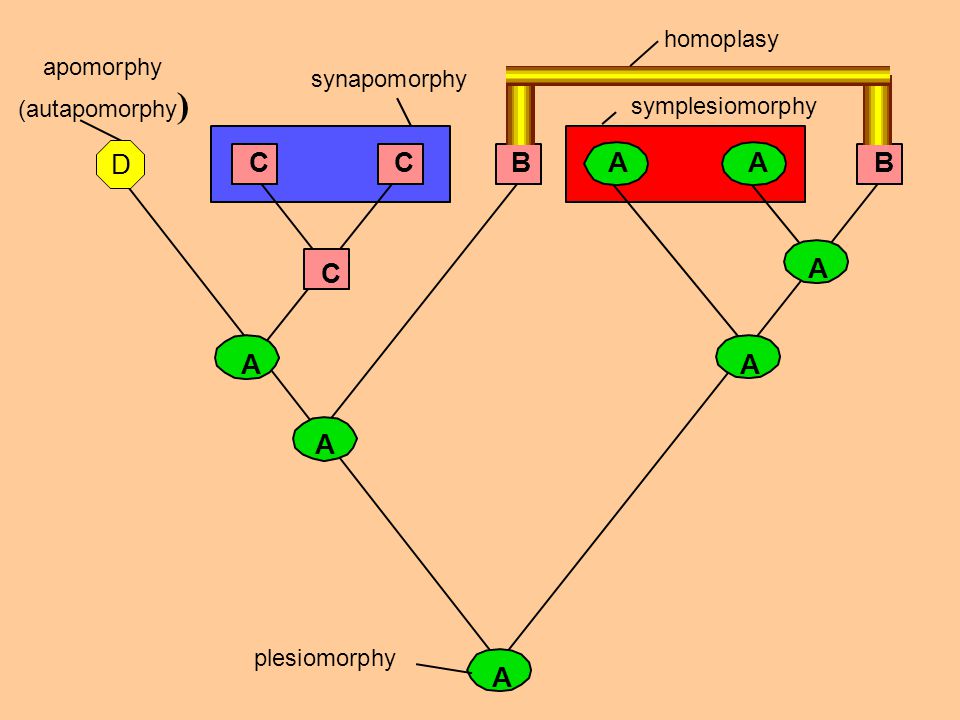All these terms have to do with identifying organisms, called taxa, into "family trees", according to identifying traits or characteristics.
Synapomorphy: a trait share by 2 or more taxa and their most recent common ancestor.
Symplesiomorphy : A characteristic shared by 2 or more taxa also found in their earliest common ancestor.
Apomorphy: A characteristic believed to have evolved within a family tree; can be used to separate one group from the other.
Plesiomorphy-A plesiomorphy refers to the ancestral trait state, usually in reference to a derived trait state.
All these terms provide valuable information, depending on how one is constructing the family tree or taxa. The first two, synapomorphy and symplesiomorphy, provide evidence among similarities between recent taxa and their ancestors. Apomorphy distinguishes differences between recent taxa and their ancestors, providing a breaking-off point that could be used to establish new groups or sub-groups.
Synapomorphy: a trait share by 2 or more taxa and their most recent common ancestor.
Symplesiomorphy : A characteristic shared by 2 or more taxa also found in their earliest common ancestor.
Apomorphy: A characteristic believed to have evolved within a family tree; can be used to separate one group from the other.
Plesiomorphy-A plesiomorphy refers to the ancestral trait state, usually in reference to a derived trait state.
All these terms provide valuable information, depending on how one is constructing the family tree or taxa. The first two, synapomorphy and symplesiomorphy, provide evidence among similarities between recent taxa and their ancestors. Apomorphy distinguishes differences between recent taxa and their ancestors, providing a breaking-off point that could be used to establish new groups or sub-groups.
CSIR PART C-QUESTION
 |
| CORRECT OPTION IS 2 As Synapomorphy: a trait share by 2 or more taxa and their most recent common ancestor in that case resin canal should be present in the ancestor as it is pinacea family . |
Thank you for visiting my blog. Please share your comments on this
article. Subscribe and follow me in Google + to get notified with new articles.


No comments:
Post a Comment